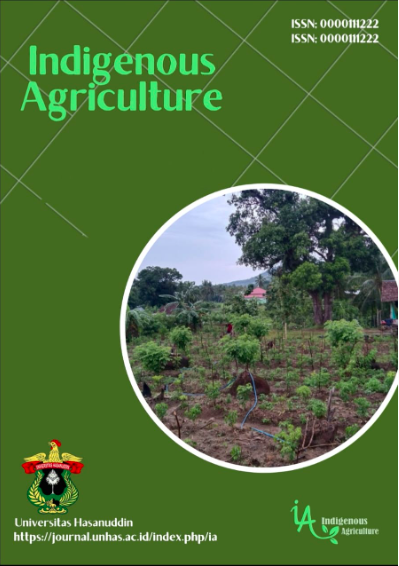Promoting Indigenous Agricultural Systems through Strategy Design to Restore the Popularity of Salak Lasape
Keywords:
Indigenous agriculture; Salak lasape; Agriculture Institutions; Horticulture,Abstract
Salak (Salacca zalacca) is a cultivated plant species with development areas spanning more than half of Indonesia's provinces. It is not surprising since salak is a tropical plant native to Indonesia, managed traditionally for generations as an indigenous agricultural system. Learning from experience, around the 1980s, the peak popularity of salak commodities in this area has succeeded in becoming a commodity as a regional icon of Pinrang Regency, South Sulawesi, called salak lasape. Although salak lasape is better known for its distinctive aroma, the quantity of production in Pinrang Regency is declining. This research aims to find appropriate strategic programs in ensuring the availability of food, especially fruit, and to restore the popularity of salak lasape as a regional icon in South Sulawesi. This research was conducted through an expert system approach. Data were obtained through resource persons from several institutions/agencies related to the development of horticultural commodities using the Interpretative Structural Modeling (ISM) analysis method. The results show that of the 14 sub-elements analyzed, there are nine of them that can be set as strategic programs in restoring the popularity of salak lasape, namely: (1) increasing the commitment of government agencies, (2) developing the marketing sector, (3) rehabilitating/rejuvenating salak plantations, (4) developing processed household products, (5) increasing farmers' knowledge and skills, (6) increasing the role of extension/mentoring, (7) fostering farmer groups/local wisdom, (8) Effectivize the role of the Industry and Trade Office, and (9) increasing the role and responsibility of the Plantation Office. Among the nine programs, two are key programs, namely: increasing the commitment of government agencies and rehabilitating/rejuvenating salak plantations. The increased role of government agencies indicates that the implementation of strategic programs that are the research findings should be under the control of institutional strengthening of horticultural commodities.


